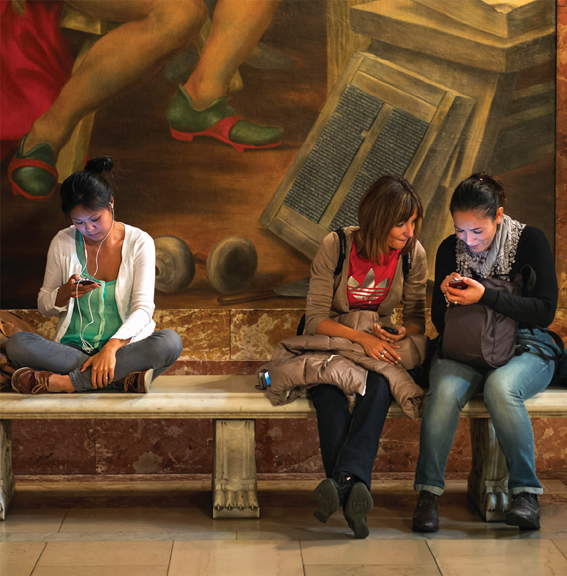Extended Case StudySocial Media and Finding Real Happiness

Social media connect us in so many different ways, expanding our human interactions beyond the limits of meeting in person. As noted in Chapter 2, social media include any blogs, collaborative projects, content communities, social networking sites, virtual game worlds, and virtual social worlds that expand our social horizons. But while social media connect us, they disconnect us in other ways, taking up time in which we might experience real physical connection and replacing it with short, highly mediated messages. With social media, we are both the media and the subject, and we create the online version of ourselves.
For at least some of us, the social mediated version of ourselves becomes the predominant way we experience the world. As Time magazine noted in 2014, “Experiences don’t feel fully real” until you have “tweeted them or tumbled them or YouTubed them—
The problem is called Fear of Missing Out (FOMO), and one report defines it as “the uneasy and sometimes all-
According to a report in Computers in Human Behavior, with FOMO there is a “desire to stay continually connected with what others are doing,” so the person suffering from the anxiety continues to be tethered to social media, tracking “friends” and sacrificing time that might be spent having in-
THE IDEA THAT SOCIAL MEDIA COULD BE CREATING NEW FORMS OF ANXIETY AND UNDERMINING OUR HAPPINESS PRESENTS AN IMPORTANT QUESTION ABOUT OUR CULTURE TO INVESTIGATE. For this case study, we will look at social media in our lives and whether they help expand our friendships, undermine our social well-
As detailed in Chapter 1 and throughout the book, a media-